In the summer of 1956, just outside Orlando, a citrus grower named Ray Collier stood beside his fruit crates, watching surveyors drive stakes along the edge of his groves.
For generations, his family had worked that land—planting the trees, tending the harvest, riding out freezes and hurricanes. But now something unfamiliar was unfolding. The stakes marked the route of a bold new highway—the first stretch of what would become Interstate 4.
Ray wasn’t sure what to make of it. The government had offered a decent price for the right-of-way, and the local paper hailed the project as a marvel of modern planning. Still, it felt like a disruption. A rupture in the rhythm of the groves.
He had no idea it was also the beginning of a fortune.
Within a decade, Ray’s sun-soaked farmland lay on the edge of one of the fastest-growing metro areas in the Southeast. Orlando was booming. What had once been rows of citrus became rows of gas stations, motels, shopping centers—and, eventually, sprawling subdivisions. The Collier family leased land to hotel developers and sold off parcels to theme park suppliers and logistics companies. What had been sleepy farmland became a launchpad for generational wealth.
This is the power of a “Path of Progress” event.
Free Report: Best Places in the World to Buy Real Estate
Free Report: Best Places in the World to Buy Real Estate
Sign up for IL's postcards and get the latest research on the best places in the world to retire. Including boots-on-the-ground insights on real estate and rental trends. Simply enter your email address below and we'll send you a FREE report - The World's Best Places to Buy Real Estate.

By submitting your email address, you will receive a free subscription to IL Postcards, Overseas Dream Home, The Untourist Daily and special offers from International Living and our affiliates. You can unsubscribe at any time, and we encourage you to read more about our Privacy Policy.
Essentially, a Path of Progress is the collision of real estate and technology.
The railroads made successes of towns along their tracks.
The interstate highway system turned backwaters into boomtowns.
The car made the growth of suburbia possible.
Improved jet technology gave rise to mass air travel, which turned into global tourism.
When a technology changes where we can live, vacation, or do business, it changes the rules of property markets.
Ever since the 1920s, when the affordable automobile and better roads first opened up Florida to northern vacationers and retirees, the state had been developing. But when President Eisenhower signed the Federal-Aid Highway Act in 1956, it supercharged that progress.
More than 46,000 miles of interstate would reshape America’s landscape—and Florida, with its vast open tracts and year-round sun, would be one of the biggest winners.
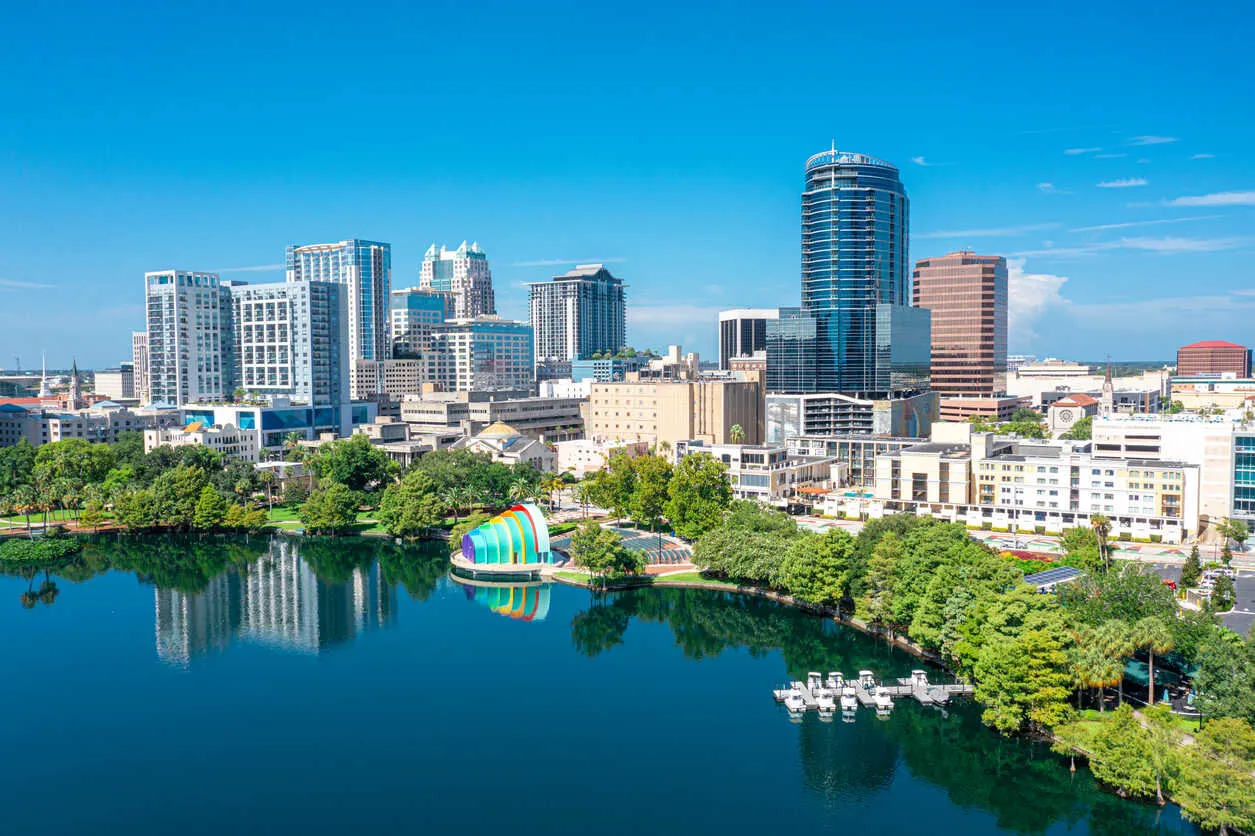
The highways didn’t just move traffic—they moved wealth. Just like the railroads had before them...and the steamboats before that...
They brought families, commerce, and development to once-remote places. They turned orange groves and pine flatwoods into suburbs, resorts, and business parks.
And for those who held real estate along their path?
The highways meant opportunity.
Here’s a fundamental fact: Real estate fortunes—big and small—are made at moments of great transformation. That’s why, for over 20 years as an international real estate investor and scout, I’ve devoted myself to finding big transformations I can follow, get ahead of, and profit from.
It’s at the core of what I do for my Real Estate Trend Alert (RETA) group. It’s why my team and I spend over a million dollars a year on travel and research, and are right now, as I write, spread out in six or seven countries.
How do we find out where there’s going to be huge demand?
We follow Paths of Progress.
I have a formula for determining if a destination is about to explode...
Free Report: Best Places in the World to Buy Real Estate
Free Report: Best Places in the World to Buy Real Estate
Sign up for IL's postcards and get the latest research on the best places in the world to retire. Including boots-on-the-ground insights on real estate and rental trends. Simply enter your email address below and we'll send you a FREE report - The World's Best Places to Buy Real Estate.

By submitting your email address, you will receive a free subscription to IL Postcards, Overseas Dream Home, The Untourist Daily and special offers from International Living and our affiliates. You can unsubscribe at any time, and we encourage you to read more about our Privacy Policy.
Access + Desire + Catalyst = Demand
Access is vital. A lot of people have to be able to get there easily. Think airports with multiple direct flights, highways that reduce travel time, and ports that welcome cruise ships and cargo. A destination that's hard to reach may stay undiscovered forever, no matter how beautiful it is.
But access alone is not enough...
Desire. It’s a place people want to be. Somewhere that offers the practical ingredients for a great lifestyle and also outstanding amenities. A nice climate, beautiful beaches, lots to do...from restaurants to marinas to golf courses. A place that caters to many markets—retirees, families, couples, party-goers, beach bums, and remote working professionals.
Access and desire can lead to growth. But the most spectacular Path of Progress events have a catalyst...
The catalyst is the spark. It’s the story, the celebrity, the policy, the buzz, the incentive—the moment the world starts paying attention. Without a catalyst, access and desire might sit dormant for years. With one? The whole engine fires.
The real turning point for Orlando came when Walt Disney purchased 27,000 acres close by in 1965. Disney picked the location largely because of I-4, Florida's Turnpike, and proximity to the Orlando Jetport (later Orlando International Airport). When Walt Disney World opened in 1971, it kicked off explosive growth in tourism, hospitality, logistics, and real estate.
Often, the catalyst is not a single big dramatic event. More often, it’s a convergence—a handful of things lining up just right.
A new airport expansion. A burst of celebrity buzz. A change in government policy. A big-name investor or developer planting a flag. A tax incentive that shifts the equation. The kindling’s already there—but the catalyst is what lights it.
We’ve seen this formula play out in spectacular ways in some of the world’s most beautiful and desirable destinations: Access + Desire + Catalyst = Demand.
Paths of Progress
Cancún, Mexico
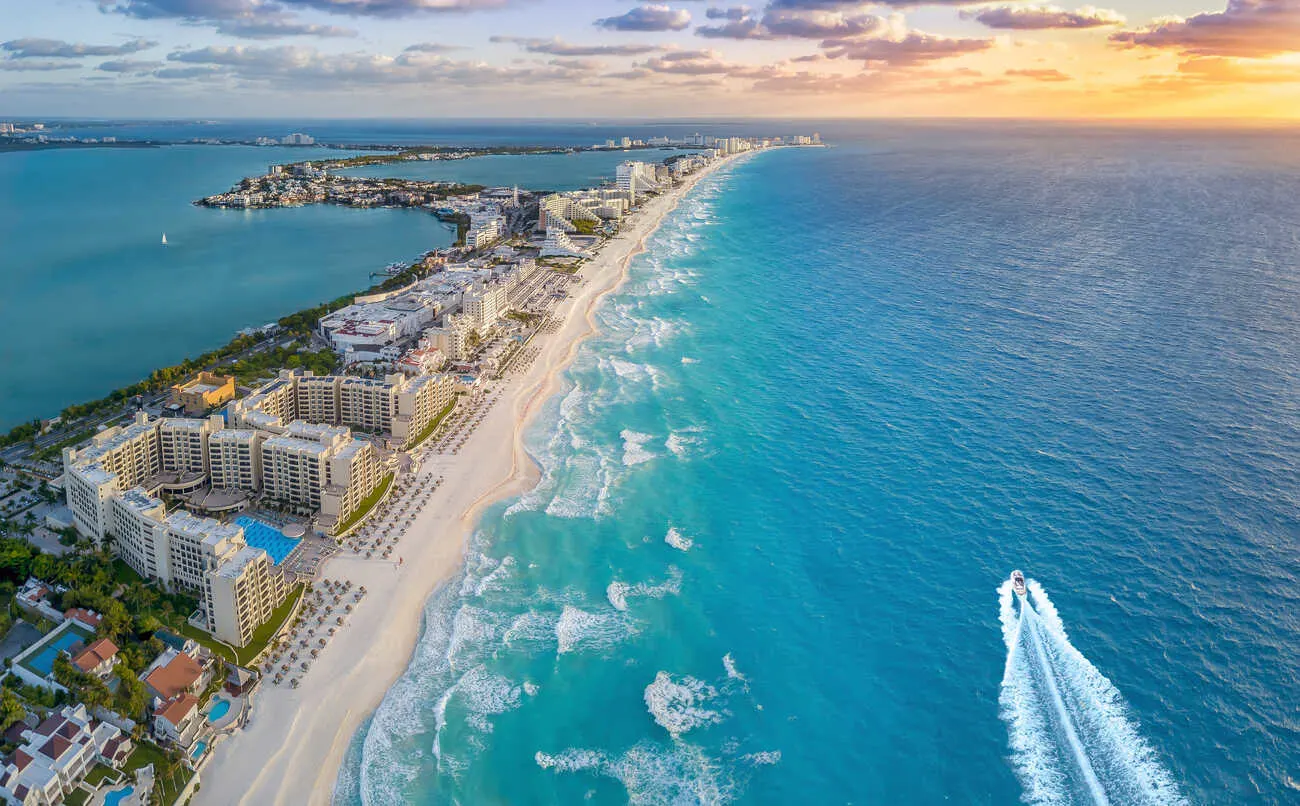
In the early 1970s, Cancún was little more than a remote sandbar with no significant development. Then the Mexican government selected it as a pilot project for tourism-led economic development. They built an international airport, offered tax incentives for major hotels, and supported international marketing campaigns. The result: a master-planned mega-destination that now attracts over 25 million visitors annually and supports a vast economy stretching from the Cancun Hotel Zone down 80 miles of stunning coastline through the brand-new city of Playa del Carmen to Tulum.
Costa del Sol, Spain
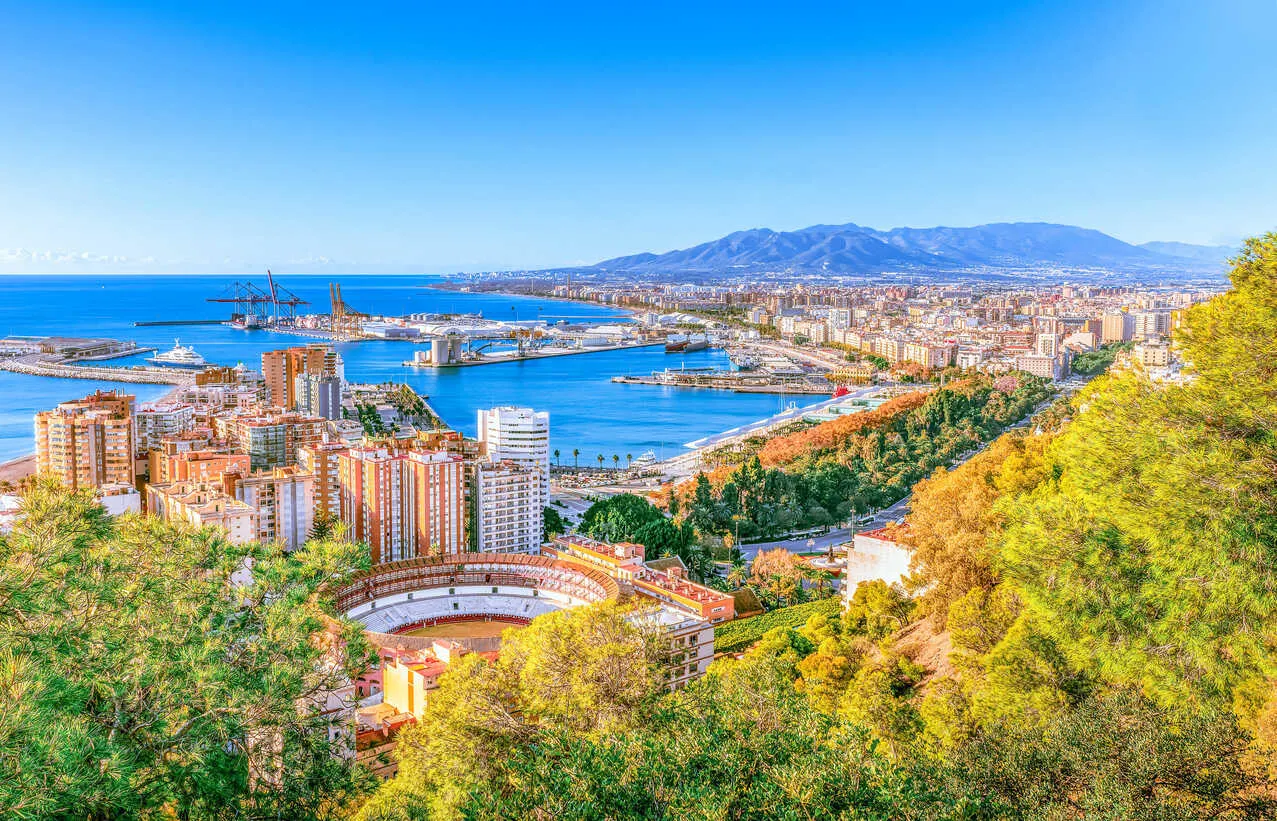
In the 1950s and ’60s, the Costa del Sol began to appear in glossy magazines, thanks to Hollywood stars, aristocrats, and jet-setters vacationing in Marbella. That celebrity sheen created desire. Then came the access: expanded roads, high-speed rail, and a growing international airport in Malaga. Spain’s entry into the EU brought investment, and the Costa del Sol exploded into a world-class lifestyle and retirement hub, with booming real estate markets.
Cabo San Lucas, Mexico
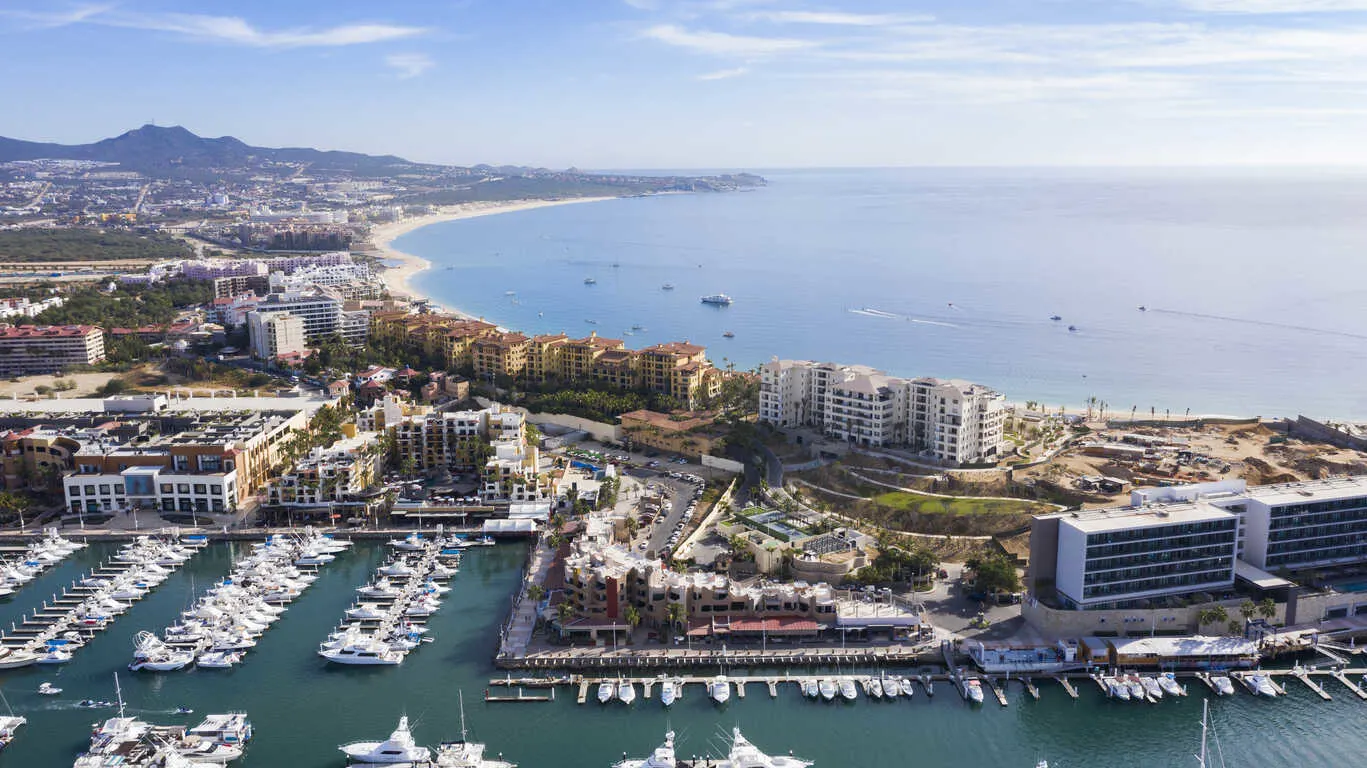
For decades, Cabo was known mostly to fishermen and yacht owners. Then celebrities began arriving—first in private jets, then with developers in tow. The government followed with infrastructure investment, including the expansion of the airport and federal highway links. Today, Cabo is a luxury hotspot with multimillion-dollar resorts, branded residences, and thriving short-term rental markets. It’s a prime example of how access and desire can meet the powerful catalyst of 5-star branding.
Punta Cana, Dominican Republic

Back in the late 1960s, Punta Cana was isolated jungle and remote Caribbean coast. But a group of American and Dominican investors had a vision—and they didn’t wait for the government. They built their own airport, created the Punta Cana brand, and invested in high-end resorts, golf courses, and gated communities. Over time, the government caught up with roads and incentives, and today Punta Cana is one of the busiest Caribbean tourism markets, with soaring real estate demand driven by both vacationers and retirees.
Bay of Kotor, Montenegro

For years, this Adriatic gem was under the radar, but now it’s emerging as Europe’s next Riviera. Access is expanding fast: Tivat and Podgorica airports are adding more international routes, new roads are under development, and the Bay is now a regular stop for cruise ships and superyachts. Desire is building thanks to Kotor’s UNESCO-protected old town, spectacular scenery, affordable cost of living, and the rise of world-class marina communities like Porto Montenegro. The catalysts? Tourism flowing over from neighboring Croatia. A strategic deal between the government and a billionaire investor to redevelop a former Soviet submarine base into a luxury yachting hub—plus Montenegro’s Citizenship by Investment program and its EU candidacy, both drawing serious international attention.
Northwest Costa Rica

Twenty years ago, the province of Guanacaste was a sleepy corner of Costa Rica—ranch land and scattered surf towns, largely cut off from the rest of the country by distance and bad roads. But for the last two decades, it has been steadily—and spectacularly—transformed by one of the most powerful Path of Progress events in Latin America.
It started with access. The opening and expansion of Liberia International Airport (LIR) was the game-changer. Suddenly, this rugged, sun-drenched corner of Costa Rica was within easy reach of North America. Direct flights from Miami, Houston, Atlanta, New York, Toronto, and dozens of U.S. and Canadian cities made weekend getaways easy and affordable.
As for desire, Guanacaste delivers the goods: dry-season sunshine, uncrowded Pacific beaches, world-class surfing, lush volcanoes and waterfalls, and a laid-back, welcoming lifestyle. Over time, the amenities caught up. Marinas. Golf courses. International schools. Farm-to-table dining. Five-star resorts. Boutique eco-hotels. Private clinics. It’s now a place where you can unplug—or plug right in and work remotely with strong internet and a beachfront view.
Catalysts have come in the form of the Four Seasons Peninsula Papagayo—with its private villas, Arnold Palmer-designed course, and celebrity clientele—put Guanacaste on the global luxury map. Then came investments from Waldorf Astoria, Ritz-Carlton, and Andaz, each raising the bar. Now a wave of momentum is building. The Liberia airport has undergone a major expansion, opening more direct international routes. New infrastructure—highways, fiber internet, desalination systems—is rolling out across the coast. The Costa Rican government has declared tourism and sustainable development top national priorities, and private investors are responding in kind.
Over the last 20 years, members of my RETA group have positioned themselves ahead of the world’s greatest Paths of Progress to spectacular effect.
Below, I take a closer look at some examples, from the Caribbean…to Portugal…to Cabo…
Punta Cana: From Drunkard’s Point to Caribbean Hotspot
Not long ago, the coast of Punta Cana on the east side of the Dominican Republic was remote.
No roads. No runways. No resorts.
Just jungle and a few scattered fishing villages. The locals called the place Punta Borrachón—Drunkard’s Point.
Nobody really knows where the name came from. But it stuck.
Until one day in 1969 when a group of American investors led by labor lawyer and philanthropist Theodore Kheel looked at a map, flew over the unspoiled coastline, and saw something others didn’t.
They bought 30 square miles of wilderness and partnered with a young Dominican hotelier, Frank Rainieri. Their idea: what if they could create a new kind of destination? One that didn’t bulldoze nature—but worked with it?
Together, they built a tiny resort. To get there, wealthy visitors had to fly in on small private planes, landing on a grass strip hacked into the jungle. But when they arrived—when they saw the water—they were hooked.
The vision grew. And then, in one of those moments that often defines a true Path of Progress, fate intervened.
Colgate-Palmolive, the toothpaste company, bought nearby land to grow coconuts for their shampoo line. The venture didn’t last—but they built a road.
Suddenly, Drunkard’s Point had a path. Access changed everything. By the 1980s, Club Med had built a 350-room hotel.
By the mid-1980s, Rainieri’s team received government permission to build a proper airport—the first privately owned international airport in the Western Hemisphere. It opened in 1984. That airport became a gateway. A lifeline. A superhighway for wealth, tourism, and transformation.
It’s the same pattern we’ve seen elsewhere...it’s the formula.

With access you unlock paradise. Punta Cana followed the model to perfection. New highways followed—first to Higüey, then to the capital, Santo Domingo. The Coral Highway opened in 2012, slashing travel times and connecting Punta Cana to the entire island.
And as access improved, so did the vision. A big group created Cap Cana—a vast, self-contained luxury enclave within the Punta Cana region. A “micro Path of Progress” within the macro one...
Cap Cana began with a vision, a master plan conceived in the early 2000s, inspired by the world’s greatest bastions of wealth and beauty. Think Palm Beach, Monaco, St. Barts. The founders weren’t just trying to build a resort—they were designing a complete, self-sufficient, world-class lifestyle destination.
They took inspiration from nearby Casa de Campo, the Dominican Republic’s original master-planned luxury community. But they pushed further. Cap Cana would be larger, more ambitious, more varied. This would be a veritable micro-state of affluence and elegance.
By the time Cap Cana broke ground, the idea of the master-planned luxury community had already proven itself. From Florida to the French Riviera, these enclaves offered something the ultra-wealthy prized: exclusivity, security, pristine infrastructure, and curated lifestyle.
Cap Cana added something more: scale. With over 30,000 acres of planned development, it’s more than twice the size of Manhattan. It’s bigger than many Caribbean nations, bigger than Aruba for example.
Today the infrastructure is top-class. Billions of dollars have been ploughed into this vision of self-contained Caribbean bliss. You’ll get around on more than 62 miles of paved roads—by car, e-bike, or golf cart. High-speed internet runs on an equally extensive network of fiber-optic cables. And one of the details I love: all electrical lines are underground, so there’s not a single unsightly wire in sight.
Now the world’s biggest names in hospitality are here: Hyatt. Marriott. St. Regis.
The smart money of luxury travel are big on Cap Cana.
My RETA group is in too...
I spent 12 years following the Path of Progress here. Finally, in September 2024, I was able to bring RETA members our first Cap Cana deal, Crystal Garden—just a short stroll from the spectacular Juanillo Beach. Two-bed condos there started at $382,400 for RETA members in September. Just seven months later, similar units were listed for $470,000—an uplift of $87,600, or 22.9%.
Two Paths of Progress in Portugal’s Algarve
What’s better than a Path of Progress? Two of them! That’s the transformation I tracked along Portugal’s Algarve.
Over the past decade, Portugal has undergone a stunning transformation, moving from a country mired in the global financial crisis to one of the most desirable tourist, expat and real estate investment destinations in the world.
I regularly scout all over Portugal—I own an oceanfront condo on the Silver Coast north of the capital Lisbon and a historic mansion in the far north of the country, in the small town of Caminha. But it’s the far south where I first followed a stellar Path of Progress event rolling out from Faro international airport along the coast in both directions.
The Algarve is in the south of Portugal facing the Atlantic. This perfect-weather destination gets more than 300 days of sunshine a year. This region is a place of rich culture, great food…soaring cliffs, white-washed villages, stunning beaches, world-class golf...
This has made it one of the most popular seaside destinations in Europe, attracting millions of tourists each year from the U.K., France, the Netherlands, Germany, and beyond. And now from North America and beyond.
Among the growing North American expat crowd are retirees, remote workers, families, and others who come for the great food, the lower cost of living, pleasant weather, rich culture, and ease of getting around Europe.
I’ve been visiting the Algarve since 2002. It’s where I’ve found some of the most profitable opportunities on my beat. Key to my recommendations in Portugal, including the Algarve, is that it has a fast-growing tourism market.
Already a mainstay of European tourism since the 1990s, the past decade has seen the country’s tourism growth accelerate to unprecedented levels. In 2019, Portugal attracted a then-record 24 million tourists. After an understandable dip during COVID, numbers began soaring higher again. In 2024, Portugal attracted 31.6 million visitors, with the number expected to top 33 million for 2025.

Millions of those who come to Portugal head to the Algarve. The Algarve has benefited significantly from twin Paths of Progress that has been driving development here for decades…
When development first came to the Algarve, it rolled out west of Faro, where the international airport is, toward Vilamoura. That’s where the major resorts, golf courses, hotels, and condo communities first developed, before moving farther west toward the town of Lagos.
Meanwhile, east of Faro and the international airport was overlooked, despite the fact that you have some of Europe’s finest beaches here…and a more traditional Portuguese feel.
In recent years, people have been starting to discover the eastern Algarve around Tavira and Cabanas—particularly well-heeled vacationers. Besides a lot of history and culture there are some incredible beaches close by. To get to them, you have to take a water taxi. (Watch out for flamingos en route.)
In the eastern Algarve, traveling toward Spain, the region is less developed, more local and traditional, and hasn’t been “resortified.” And that’s part of its appeal.
Tavira was on its way to becoming a firm tourist favorite, with a Path of Progress rolling toward it. Then the Great Recession hit.
In 2007/2008, just as the real estate market peaked, developers were homing in on the underdeveloped beach towns east of Faro, particularly around Tavira, including Cabanas, just a 10-minute drive from Tavira. Then, crisis hit, and the area managed to stay under the radar and relatively undiscovered.
But still, on the eastern Algarve it’s in Cabanas and Tavira where I see the prospect for biggest tourism growth and appreciation.
This area appeals to a broad cross-section of tourists (including families), with tourism coming from across Europe, with Scandinavians, French, Swiss, German, and others, along with the British and Irish.
They’re coming here in ever-greater numbers in high season. And Cabanas will get the shoulder season traffic…golfers, retirees, and other renters throughout the year. That means exceptional potential for rental income.
At the other end of the Algarve, the Path of Progress runs west to the town of Lagos, which was really starting to tick when the global financial crisis hit in 2008/09. Luckily, most of the land here is owned by just a handful of families, and they weren’t highly leveraged when things took a turn. The crisis dampened development but left much fewer half-built condos scarring the landscape than you find elsewhere.
Lagos is the most historic and upmarket town on the Algarve. It’s a place where the old town spills down cobbled lanes, into shady plazas toward a state-of-the-art marina. And it’s eminently walkable. You can walk to the beaches. Walk to the restaurants, bars, stores…walk to the train station and hop a train to Faro where the international airport is…
You can walk to the marina and jump on a boat to go sailing, fishing, or cruising around the cliffs, sea stacks, and bluffs of the Western Algarve’s awesome coastline. The weather is perfect, with temperatures hovering around 80 F. Mornings and evenings are a little fresher, ideal for getting around.
Lagos has amazing restaurants, artsy boutiques, imposing old fortifications, and a Southern Californian vibe. In fact, I know of at least two Californians who say it’s a better place to live than California…more affordable, certainly safer…with weather just as good.
Few cities in this part of Portugal can compare to Lagos for sheer variety of historical buildings and monuments, stretching back through more than 2,000 years of Carthaginian, Roman, and Moorish influence.
The old town’s narrow, wave-patterned streets are partially enclosed by 16th century stone walls and easy to navigate on your own, though you never know what you’ll find around the next corner. It could be a charming café, a quaint market, or a pastelaria selling mouth-watering cakes and pastries.
Lagos attracts tourists from all over the world. It has exceptional access. It’s now just an hour from Faro airport with good road connections—there’s that Path of Progress in action—where you can catch a two- to three-hour flight to almost anywhere in Europe. Faro has direct flights scheduled to 90 destinations in 23 countries.
It’s one of the reasons I like this town so much. And not just to visit, but as a place to invest in real estate.
Lagos is the best beach town on the Algarve and site of some of the most profitable ever RETA deals:
€252,000 More—RETA members had the chance to own two-bed condos in the Adega community in November 2020 from €348,000. One sold in 2025 for €600,000. That’s an uplift of €252,000.
Uplift of €414,500—In December 2019, I brought RETA members a deal to own stunning luxurious condos in the Santa Maria community in Lagos from €310,500. Recently, a two-bed condo in Santa Maria was listing for €725,000. That’s an astonishing uplift of €414,500.
Boost of €274,000—In August 2021, I brought RETA a deal in the Dona Maria community overlooking the marina. This is one of the premier communities in downtown Lagos. RETA members could own two-bed condos here from €575,000. A two-bed condo there has since listed for €849,000. That’s €274,000 more.
€1.1 million More—One RETA member purchased a penthouse in Dona Maria for €1.1 million. In 2024 the penthouse listed at double that—€2.2 million.
Free Report: Best Places in the World to Buy Real Estate
Free Report: Best Places in the World to Buy Real Estate
Sign up for IL's postcards and get the latest research on the best places in the world to retire. Including boots-on-the-ground insights on real estate and rental trends. Simply enter your email address below and we'll send you a FREE report - The World's Best Places to Buy Real Estate.

By submitting your email address, you will receive a free subscription to IL Postcards, Overseas Dream Home, The Untourist Daily and special offers from International Living and our affiliates. You can unsubscribe at any time, and we encourage you to read more about our Privacy Policy.
Cabo and the Baja
Cabo is simply one of the world’s most prestigious and beautiful getaways…the scene of a phenomenal transformation.
Once hard to reach and a playground of Hollywood stars and European royalty, Cabo is now well-connected with direct flights to the U.S. and Canada.
You could say it started with a starlet…
Lucille Bremer was a dancer who went from stage to screen and starred in the 1944 smash hit Meet Me in St. Louis. She danced on screen with Fred Astaire, made friends with the likes of Bing Crosby and Lucille Ball… worked with the greats of MGM.
Yet Hollywood wasn’t for her…
In 1948 she fell in love with a dashing entrepreneur who had discovered a sleepy oceanfront paradise right at the bottom of the Baja California peninsula. Abelardo Luis Rodriguez was the son of a Mexican president and he dreamed big… building an airstrip and the first-ever resort, Rancho Las Cruces.
His new wife, Bremer, spread the word among her Hollywood friends about a place away from it all where you could snorkel and fish all day and sip cocktails without prying press.
The great and the good of Hollywood came in private planes and by boat. There was no other way to get to Los Cabos, making it the perfect exclusive escape.
With the Pacific Ocean to the west and the Sea of Cortez to the east, Cabo was, and still is, a fisherman’s paradise. Jacques Cousteau labeled it “the world’s aquarium.” That’s a great description for a place where you can see blue whales, dolphins, giant manta rays, sea lions, and more than 900 species of fish. Whales close to shore are such a common sight in season that I’ve stopped pointing them out to friends.
Celebrities like John Wayne arrived from California to another world, where 500-pound black sea bass lurked in the harbor and sailfish and striped marlin were close to shore. Today Cabo hosts some of the world’s most prestigious fishing tournaments with payouts of millions of dollars to the winners.
Although today anyone can catch a flight to Cabo from all over the U.S., the lack of infrastructure kept Cabo super exclusive for a very long time. And that helped firmly establish Cabo as a favorite destination for Hollywood. Robert DeNiro, Leonardo DiCaprio, Cameron Diaz, Jennifer Lopez, George Clooney… the list of celebrities who visit and invest in Cabo is long.
That’s one big reason it’s become the epitome of luxury in Mexico. And along with the famous, the plain old super-wealthy hang out here.
As the years rolled on, it became easier to get to Cabo. A new road connected it all the way to Southern California. The Cabo international airport hooked up flights across North America.
Just as we’ve seen happened in the past in America, a major transformational event occurred.
The real estate market in Cabo followed the jet-set lead. When you attract visitors on the level of George Clooney, you build second homes for that market. In Cabo, you’ll find plenty of choice in the market for homes with price tags of $5 million plus.
Multi-million-dollar homes are aimed at those with deep pockets. This kind of buyer doesn’t go bargain hunting. They want the most expensive, most decadent, and most enviable real estate they can find—and they’ll get it in Cabo. They are often buying a third, fourth, or fifth home to add to their portfolio, and are more concerned with adding ridiculously overpriced upgrades than getting any kind of gains.
Then there are the luxury timeshares, which are big business in Cabo. My impression of timeshares was formed by aggressive salesmen in Europe… pitching two weeks a year in a cheap condo for a few thousand euro in popular tourist haunts. But timeshares in Cabo are on a whole different level…aimed at aspirational “ordinary rich” folks who want a slice of the jet-set lifestyle but can’t afford a multi-million-dollar home.
Prices had reached fever pitch in Los Cabos before my first visit in 2014. In the early 2000s, beachfront homes in Los Cabos would have set you back 20 times more than any other comparable Pacific coast lot. Prices had skyrocketed to incredible levels.
Then in 2007, the global economic crisis hit. In Los Cabos, construction ground to a sudden halt. Buyers and investors were no longer willing to pour millions into vacation homes…or spend hundreds of thousands on a timeshare—a place they didn’t even own.
And that’s where the first RETA here opportunities came into play…
I knew that Los Cabos would bounce back. But, in the interim, there was opportunity for doing deals… especially using RETA’s group buying power with smart developers who knew how to adapt to the market conditions.
And one of them, the developer at Copala, gave us our first-ever Cabo opportunity. The developer’s business until then was primarily timeshares… but they knew that to stay nimble after the crisis, they had to do something different. So, they offered us luxury condos at a deep discount. It was an opportunity so good, I acted myself. That was in 2015 and the RETA price on a two-bed, two-bath ocean-view condo was $336,156. (In September 2022 I got an email from a real estate agent saying they had buyers ready to pull the trigger and asking would I sell for around $600,000. Today similar condos in my building list for $630,000.)
The real estate market was at a low point in 2015 when we seized the opportunity. But that low point didn’t last. Even as we seized that chance Cabo was gearing up to roar ahead…
The big groups in Cabo took a deep breath in the wake of the financial crisis and set their sights on a major transformation.
Since then billions has been ploughed into infrastructure, new golf courses, and scores of new resorts. Among those are big names: Montage, Ritz-Carlton, Four Seasons, Hard Rock, and Nobu. These resorts aren’t all dipping into the same pool of wealthy clients. They all target specific segments.
And these powerful resort operators are highly skilled at pressuring the local government and tourism authorities to support them by adding more flights and funding more infrastructure.
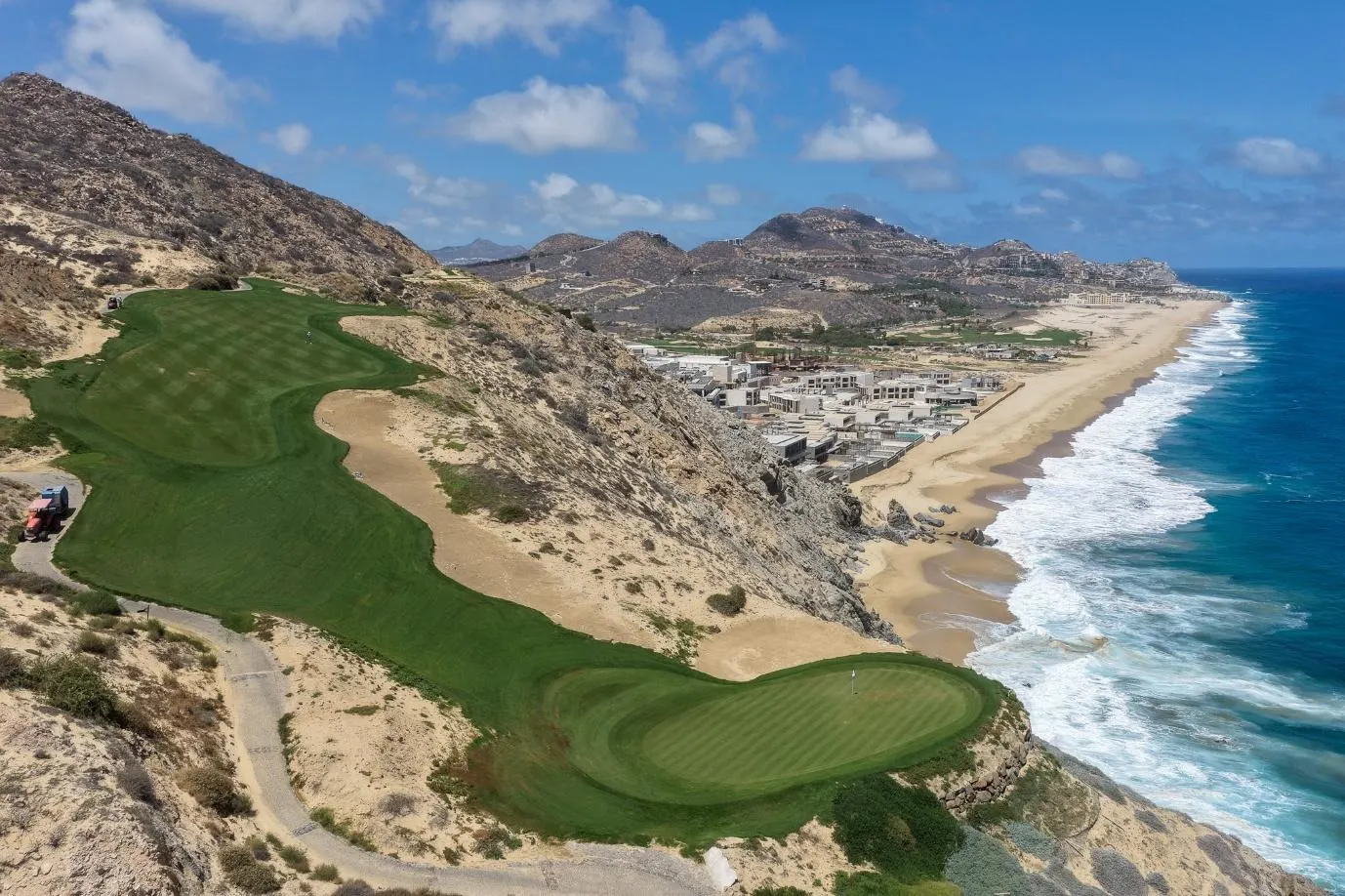
Cabo was on this billion-dollar Path of Progress tear when COVID swept the globe and shut down travel. After COVID, it was back to the races big time and the pace of the Path of Progress picked up.
Before the pandemic, tourism was booming. In 2018, passenger numbers at the airport were up nearly 7% on the year before. 2019 saw the same increase again. In the wake of the pandemic, tourism bounced back bigger and faster than before. It began setting new records year after year. In 2024, just under 4 million visitors… a new all-time high.
The opening of new luxury resorts is also continuing at the same rapid pace as before. Cabo is a tourism juggernaut and a destination for the rich and famous. Which means lots of high-paying jobs. Resort managers, executives, 5-star chefs…they all need a place to live.
Since the outset of the Path of Progress, I’ve watched as the number of these professionals increased, boosting demand for best-in-class condos in the $300,000 to $500,000s (and creating the critical shortage that is getting worse).
Then the pandemic freed millions of people from the office. And this is where it gets really interesting…
Before the pandemic I regularly met professionals—especially from the West Coast and Texas—who were spending a few weeks or months running their businesses back home from a terrace in Cabo. The internet and ease of getting to and from Cabo gave them this flexibility.
They were everywhere…my neighbors in Copala…folks down on my favorite beach in Santa Maria…on a Sunday day-trip to trendy Todos Santos…at a gourmet restaurant in San José del Cabo…
Los Cabos is a short flight from many U.S. cities. The weather is perfect, the lifestyle incredible, and the views—if you have an ocean-view condo—are amazing. It boasts sun and sand, sea and surf, super-luxe hotels and day spas, fine dining, and some of the world’s best golf and fishing.
This combination meant Los Cabos was a pioneering work-from-home destination before the pandemic. Then, during COVID, this trend accelerated massively. The demographics of it changed too. Younger work-from-anywhere professionals—well-paid folks in their 30s—started arriving en masse. Many have never left. More have come in recent years as the work-from-anywhere trend has become entrenched. This has created huge demand for best-in-class real estate. Cabo, in many ways, has become an extension of the Californian market.
I own more real estate in Los Cabos than anywhere else in the world. I have bought six properties here in RETA deals. I’ve already told you about Copala.
Next was Cabo Costa. I brought this deal to RETA members in August 2021. The starting price for RETA members was from $188,200 for two-bed, two-bath ocean-view condos. In May 2025, a condo that was available to RETA members for $197,300 listed for $380,000—that’s $191,800 more.
In May 2022, I brought members the chance to buy in an upscale community called Monte Rocella. Our RETA price for a two-bed ocean-view condo was from $234,600. Also available were two-bed condos with views over the community’s cactus garden from $198,400 and two-bed penthouses from $318,800 with a spacious rooftop terrace.
In December 2024, a condo that RETA members could buy for $252,600 at launch was listed at $437,000. That’s $184,400 more.
I would love to be able to present more deals to my Real Estate Trend Alert group in Cabo. I believe in this market that strongly. I keep a very close eye on the real estate scene. I’m often zipping around town to see potential projects with my own eyes.
But the vast majority of opportunities simply aren’t up to snuff in terms of location and amenities. And there aren’t many of them, in any case. That’s because there are serious barriers to development in Cabo. Permitting for new construction is tight and complex. Appropriate land with views (in Cabo people want ocean views) and in convenient locations is in short supply.
But this isn’t a bad thing for real estate investors like me and members of my RETA group. It just means we need to be highly selective in our investments. And it makes the opportunities I do find all the more valuable.
Cabo has been the site of some of my strongest investments, personally and for members of Real Estate Trend Alert. I think the transformation taking place here, with Cabo turning into the ultimate high-end destination, will continue to run for some time yet.
Moreover, with prices and demand continuing to rise in Cabo, the Path of Progress is expanding outward and opportunity is spreading to new destinations on the Baja California peninsula...
Four More Transformations…
These are just some of the transformations I’m tracking. You’ll find four more—and further details on all the above—in my bestselling book, Ronan McMahon’s Big Book of Profitable Real Estate Investing.
Today, I want to offer you a free print copy (you just pay $5.97 for shipping).
This book, which I’ve just finished updating, contains all my best strategies and insights from 25 years as an international real estate investor and scout.
Inside, you’ll learn about…
The critical first step you need to take before investing in overseas real estate...
How to get financing overseas…
Strategies for maximizing rental income…
What types of real estate you can buy through your 401(k) or IRA…
And so much more…
Claim your free copy here now.
You’ll also learn about how I find the best deals…
Of course, it’s not enough to get ahead of the Path of Progress.
Once you’re ahead of the curve, you need to apply the Four R’s: The Right real estate, in the Right place, at the Right time, at the Right price.
The Right real estate means best-in-class. I’m not interested in average. I’m only interested in properties with a clear edge—something that makes them stand out in the market and hold long-term appeal. That edge might come from top-tier amenities, exceptional design, or superior build quality. It might be the layout, the views, the privacy, or its position within a master-planned community. Often, it’s all of the above.
I’m looking for the best unit in the best-positioned building in the best location. The kind of real estate that turns heads, rents fast, and holds value—even in a down market. Because when it’s truly top-tier, everything else becomes easier: resale, rental demand, exit strategy, capital appreciation. That’s the right real estate. And that’s all I recommend.
The Right place means a specific pocket of opportunity. It’s not just about the country or region—it’s the neighborhood, the street, sometimes even the side of the building. Just being in the right city isn’t enough if you’re in the wrong zone or on the wrong block.
The Right time means getting in early—before the buzz goes mainstream, before prices run up, and while the biggest gains are still ahead. Timing the curve of demand is key. At RETA, that’s what we specialize in: identifying the early phase of a transformation before the headlines hit.
The Right price means RETA pricing. That’s the biggest edge. This isn’t retail. It’s not what you see on a developer’s website or in a brochure. RETA pricing is off-market, negotiated directly with the developer and available only to RETA members. The developer gets momentum. They can sell to my group before public launch—they get a rapid injection of sales. This changes their financial models, saves on marketing, and lets them move on sooner to other projects.
In return, I negotiate pricing far below what anyone else ever pays. That’s the RETA advantage: early access, below-market pricing, and exclusive terms you can’t get anywhere else. It’s a win-win. The developer gets to move forward. RETA members get a shot at maximum uplift.
When you apply all four R’s, your odds of success go way up. You’re not speculating—you’re positioning. You’re not just hoping for profit—you’re engineering it.
I see real estate investors struggling to make the numbers work in America.
Increasingly folks are looking outside of their home states. That’s smart, and also a lot easier than it would have been a decade ago.
Today with the internet and other technological advances, investing long-distance from the comfort of home is easier than ever. The internet is itself a massive transformational event. And it means you can buy, manage, and market a property in another state or country in a way that was inconceivable before.
And, when you make the world your oyster, you can play big transformations for enormous profit far more often.
And playing big transformations—as I say—is where real estate fortunes get made.
Check out my book, Ronan McMahon’s Big Book of Profitable Real Estate Investing, to learn more.
Click here now to get your free print copy.
Free Report: Best Places in the World to Buy Real Estate
Free Report: Best Places in the World to Buy Real Estate
Sign up for IL's postcards and get the latest research on the best places in the world to retire. Including boots-on-the-ground insights on real estate and rental trends. Simply enter your email address below and we'll send you a FREE report - The World's Best Places to Buy Real Estate.

By submitting your email address, you will receive a free subscription to IL Postcards, Overseas Dream Home, The Untourist Daily and special offers from International Living and our affiliates. You can unsubscribe at any time, and we encourage you to read more about our Privacy Policy.
Recommended Reading
Interested in this topic? Read more insights from our experts on Global Shifts in Retirement:
